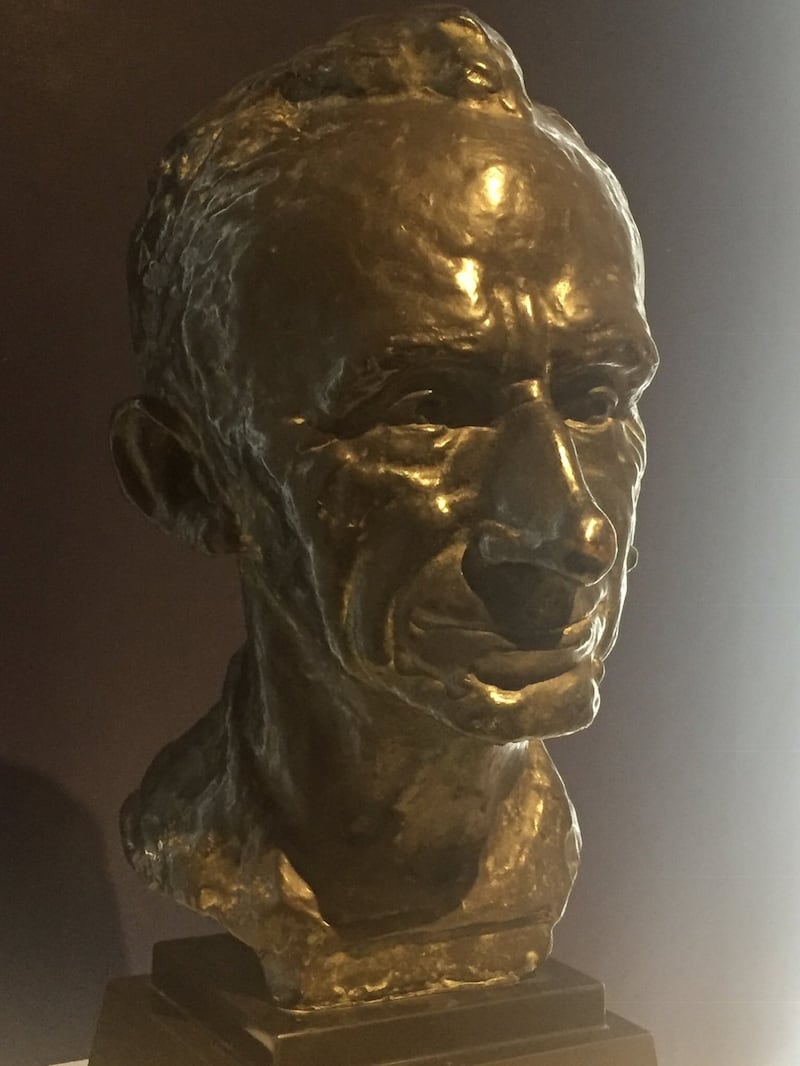One afternoon in early January 1922, as the Dáil acrimoniously debated the Anglo-Irish Treaty, two gunmen with revolvers drawn burst into a Dublin pub. They bundled a startled Arthur Kay, the Times’s special correspondent, into a stolen Rolls Royce and sped off in the direction of the Curragh. At the wheel was Jim Gray, a driver of legendary skill and recklessness, while the consummate gunman Dan “Sandow” O’Donovan sat in the back.
Gray drove in a “breakneck dash” with Kay hanging on for dear life “in that tossing, pitching, skidding car as it bumped and bounced its way” to the anti-Treaty IRA’s stronghold of Cork. According to Kay: “I have heard stories of derring-do in the matter of motor driving, but I never met his equal.” When the car engaged a particularly dangerous stretch of road, Gray turned around to the terrified journalist with “an amicable grin”. In the meanwhile Sandow joked that he was so fed up looking all over Dublin for the English man that he felt like shooting him.
His offence was that on a recent visit to Cork he had interviewed a number of IRA members including Eamon O’Mahony – the local IRA liaison officer with the British army – whom he quoted as rhetorically asking: “If we had to go to war again, what better terms would we win?” Sean O’Hegarty, the anti-Treaty leader in Cork city, was incensed with the article’s inference that some of his officers might support the Treaty, and resolved that the journalist should face justice.
The remainder of the drive south was uneventful. Kay said of Sandow: “He did not boast, but he spoke with a matter of fact directness of deeds done, which convinced me that he would carry out his orders and that if I attempted to escape not the slightest predilection in favour of a prisoner, apart from his sense of duty, would influence him. Though he was kindly and affable I never lost sight of the sinister looking gun which peeped out of his pocket. He was considerate asking if I was warm”; whereupon Sandow handed him a blanket. Later they stopped at a pub for a quick drink.
On and on they drove, along badly rutted and war-ravaged roads – at times passing with impunity British soldiers in their armoured lorries – until long past midnight they arrived at a small remote farmhouse. After a warm welcome from the farmer and his wife, they gathered around the peat fire for “a late supper, while stories of deeds in the Irish struggle and the prospects of the Dáil meeting were the subjects of conversation”.
The next day Kay went for a walk with an IRA officer, whom he declared was “one of the most charming men in the world”. Finally, in the afternoon, O’Hegarty and his entourage arrived in two cars. However, there was no sense of urgency and everyone had a cup of tea in the kitchen, before eventually moving to the rustic sitting room, which had been rearranged as an improvised courtroom.
O’Hegarty convened a “military court of inquiry” and appointed himself both judge and prosecutor; there was no need for a jury. The 40-year-old IRA commander was unremarkable in appearance; small in stature and dressed in a cheap suit, he resembled a postal clerk, which he once was. But he completely dominated the proceedings. His subordinates didn’t dare to interrupt him and when speaking they deferentially addressed him as “chief”. Unknown to Kay, O’Hegarty had ordered more executions and “disappearances” during the War of Independence than any other IRA leader in the country. He was so tough that even the indominable Sandow called him “a ruthless bastard”.

In his characteristic brusque manner he charged the defendant with “publishing news concerning the Irish Republican Army which had not been authorised and with the fact that the views put forth did not represent the views of the Army in Cork”. Whereupon O’Hegarty handed him a copy of the offending article with the relevant passages marked in ink and proceeded to call the two witnesses. Eamon O’Mahony admitted that he had talked to Kay for up to an hour, but “denied that he gave permission for an interview”, adding that the journalist hadn’t taken notes. The second witness “confessed himself quite unable to recall any of the statements made”. The pair were desperate to extricate themselves from the mess that their original words had landed themselves in and so were of no help to the defence. The phlegmatic Kay remarked: “That was unfortunate, but here you have it.”
The journalist was then sent to the kitchen while the court deliberated. There he noticed a group of glum-looking IRA fighters sitting by the fire, whom he surmised were the firing squad. After “a very considerable interval”, he was called back to the courtroom. O’Hegarty announced that he had been found guilty, explaining that since O’Mahony was a liaison officer he was no longer an active IRA officer and therefore in the article he should not have been referred to as “an officer of the IRA”. He was offered the choice of issuing a statement clarifying these “facts” or being deported. He chose the former.
A much relieved Kay was driven to Cork city and handed over to Michael Collins’s emissary Emmet Dalton, who had rushed down from Dublin to rescue him. The journalist was amused that, unlike Gray, Dalton and his companions had great difficulty navigating the roads. “We entered Cashel and motored on for several miles only to find ourselves in the town again, and again [sic] we missed our way. Broken bridges, wrong turnings and many other accidents hindered us (the chauffeur on one occasion falling into a pool when in quest of water).” Finally, a marathon 16 hours later he reached the safety of Dublin, just in time to report the Dáil’s ratification of the Treaty the following day.
The incident was a major embarrassment for Collins, who had guaranteed Kay’s safety, and when interviewed by The Times he warned that the kidnappers would “be severely punished”. But Collins well knew that this was an empty threat, for he had no power or influence in Cork city, which was O’Hegarty’s fiefdom.
During his ordeal Kay benefited from O’Hegarty’s idiosyncratic sense of justice. However, the outcome could have been tragic. And although his “punishment” was surprisingly mild, he was forced to retract an article that was essentially accurate. In a follow-up piece he wrote for the Times he effusively praised his abductors, most likely out of a realisation that they could have easily returned to Dublin and shot him.
The reality was that in the Ireland of 1922 O’Hegarty and his comrades had become self-appointed arbiters of what could and couldn’t be reported. Furthermore, the incident highlights the chronic insecurity of Irish republicanism, its conviction that it represented the “will of the people” and its intolerance of criticism; traits that endured. The censorship and intimidation of Kay is also relevant today, at a time when journalists around the world are increasingly being threatened and silenced. Though rarely in as dramatic a fashion.
It’s extraordinary that O’Hegarty orchestrated such an elaborate and hazardous operation about what was to him a matter of honour and principle. As Shakespeare wrote in Hamlet: “Rightly to be great is… to find quarrel in a straw when honour’s at the stake”.
I’ve written about the kidnapping in my book The Ballycotton Job (Mercier Press, 2022) since it gives insight into the remarkable character of O’Hegarty, the book’s protagonist, in his confrontation with Collins and the pro-Treaty forces on the eve of the Civil War (1922-1923).
O’Hegarty vehemently opposed the Treaty’s creation of an Irish Free State and was determined to resume the fight against the British in order to achieve a fully sovereign republic. In order to do so he had first to rearm and re-equip his brigade. Therefore, three months later, in March 1922, he set out to capture the royal navy’s arms ship the Upnor and its cargo of over 120 tons of munitions on the high seas. It was the IRA’s most daring and brilliant operation, an incredible story of modernpday piracy. An event that shocked Collins, threw the British government into disarray and changed the course of the Irish Civil War. This is the story of The Ballycotton Job.

















